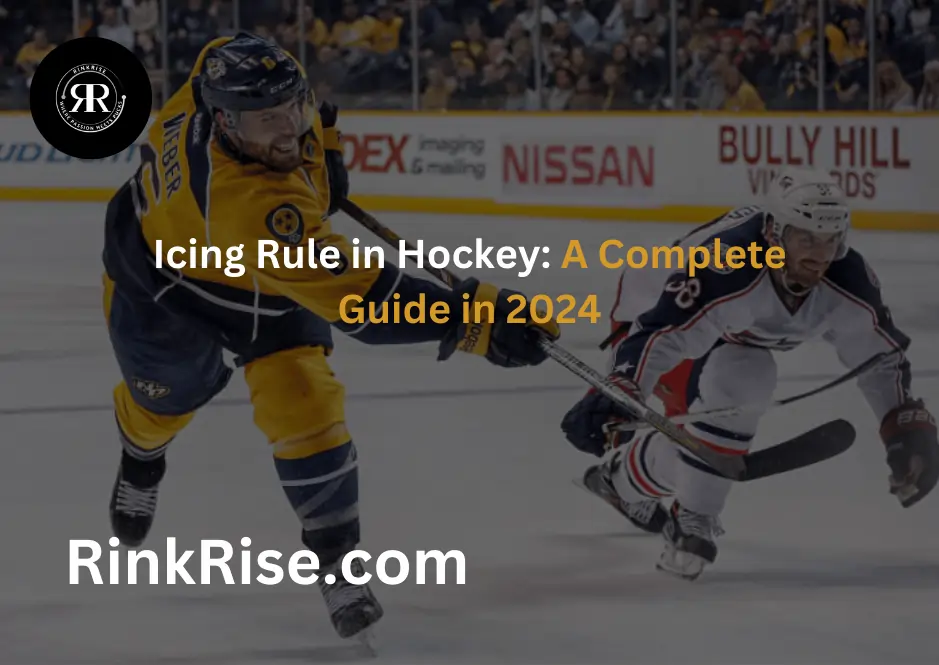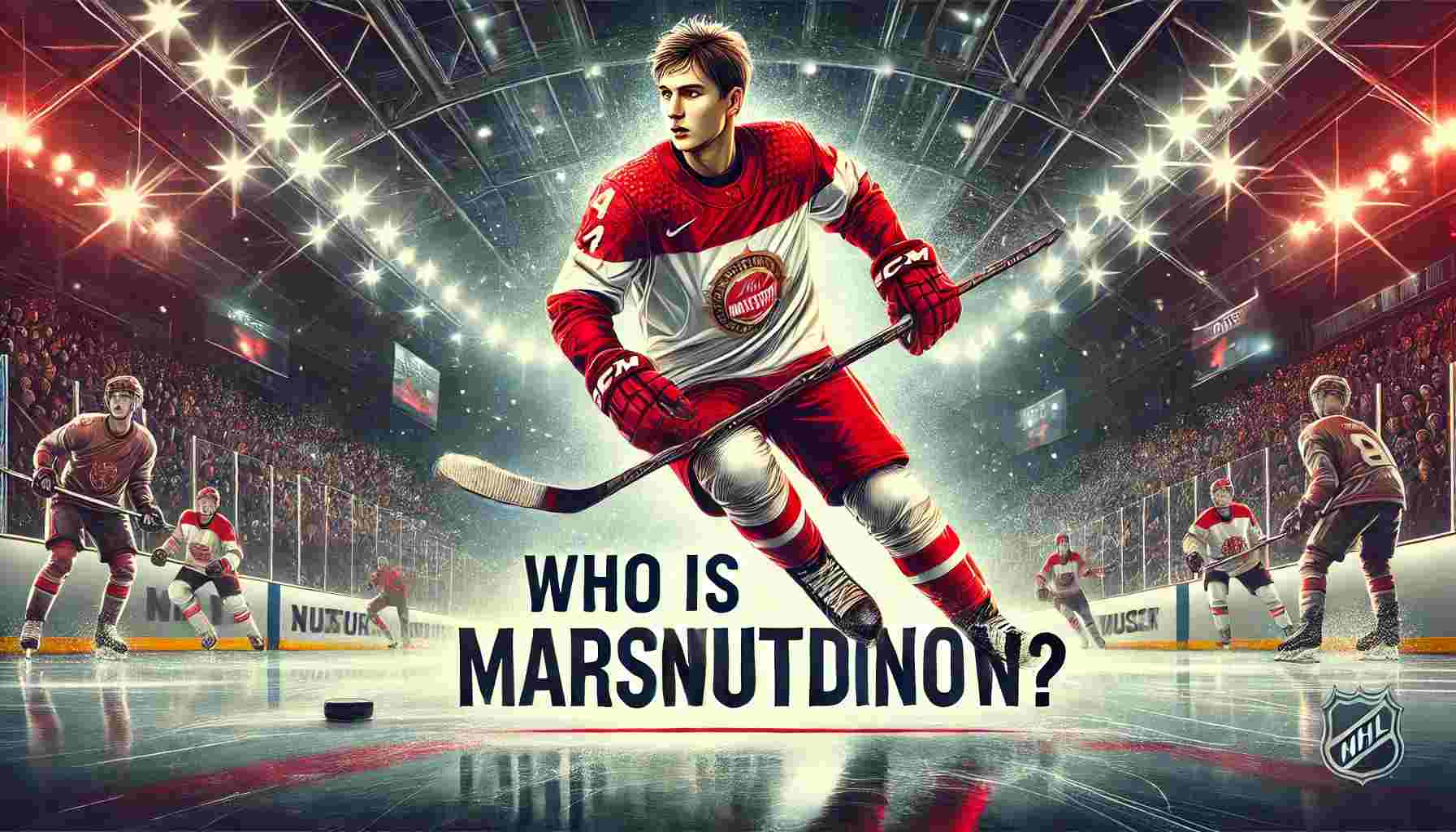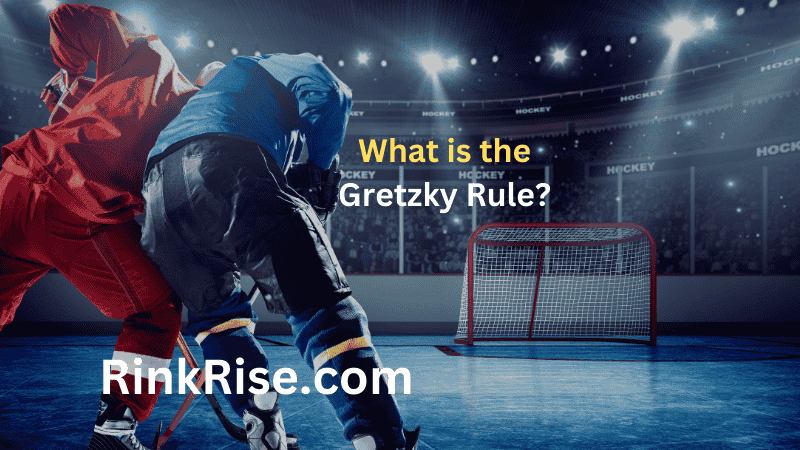What is the Icing Rule in Hockey?
The icing rule in hockey is a strategy where a player shoots the puck across the red center line and it travels to the opposite goal line.
Teams often use this method when facing defensive pressure, aiming to clear the puck out of their zone quickly. It’s crucial to recognize that icing is an intentional tactic, rather than an accidental occurrence. For icing to be called, the puck must cross the goal line without being touched by another player, with the exception of pucks that enter the goal.
Objective of the Icing Regulation
The main objective of the icing regulation is to enhance the pace of the game and prevent unnecessary delays. This rule discourages teams from simply shooting the puck far down the ice to avoid defensive pressure. By doing so, it compels teams to participate more actively in the game to maintain possession.
Additionally, the icing rule boosts offensive play by enabling the attacking team to recover the puck in a favorable position. If a team commits icing, the subsequent faceoff occurs in their defensive zone, providing the opposing team a better opportunity to score. This strategy of the rule is designed to foster a more dynamic and continuous game, encouraging teams to focus on offensive tactics.
Understanding Icing in Hockey
Icing in hockey is essentially a strategy used to delay the game. Traditionally, teams in the lead employed this tactic by shooting the puck to the far end of the rink. This allowed them to waste time and protect their lead. Due to its impact on the game’s pace and fairness, icing is generally prohibited, as it was found to frustrate both fans and the opposing team.
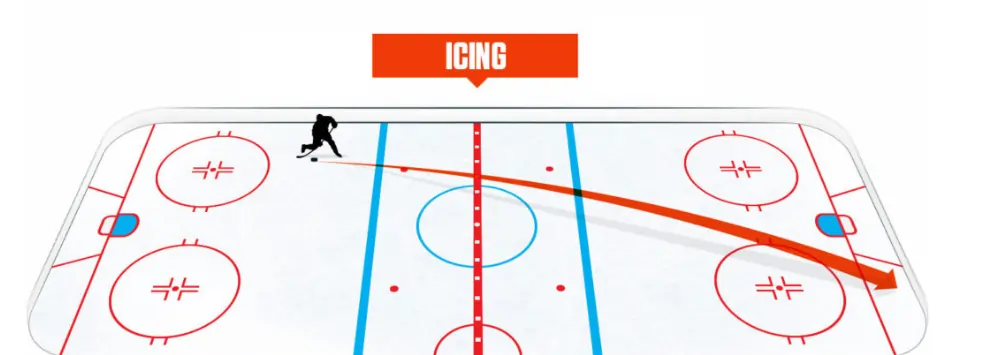
Icing Rules: NHL vs. Other Hockey Leagues
In the National Hockey League (NHL), the icing rule is distinct from those used in various other ice hockey leagues. In the NHL, icing is called when a defensive player touches the puck before any offensive player after it is sent down the ice across the goal line. If an offensive player reaches the puck first, the game continues without interruption. Conversely, other leagues employ a no-touch icing rule, where the game stops immediately when the puck crosses the goal line, eliminating the need for any player to make contact with the puck. This method is known as no-touch icing.
When Is Icing Declared in Hockey?
Essential Criteria for Declaring Icing
Icing in hockey is declared under specific conditions that emphasize the defensive strategy and fair play aspects of the game:
- Origin of the Puck: The puck must be sent from within the icing team’s defensive zone, ensuring it starts its journey from a defensively strategic area.
- Puck Crossing: It must travel beyond the center red line, signifying it has moved a considerable distance across the ice.
- Untouched Puck: The puck should cross the opponent’s goal line without being touched by any player, including goalies from both teams.
Influencing Factors on Icing Decisions
Several elements determine whether icing is declared or annulled:
- Touch Icing: Icing can be canceled if:
- An opposing team player, other than the goalie, intercepts the puck before it crosses the goal line.
- A member of the icing team intentionally reaches the puck first, promoting fair play.
- Goalie Involvement: The position and actions of the goalie are crucial:
- If the goalie ventures out of the crease to interact with the puck, icing might not be declared, allowing for more dynamic gameplay.
- Linesman’s Discretion: Linesmen must evaluate each situation critically, considering:
- Potential interaction by an opponent before the puck reaches the goal line, possibly negating icing.
- The intent behind the puck’s movement, distinguishing between a genuine pass and deliberate icing for an accurate and fair interpretation.
Consequences and Exceptions of Icing
Faceoff Placement
Following an icing call, a faceoff typically takes place in the defensive zone of the team that committed icing. This rule ensures that the responsible team faces defensive challenges as a direct consequence of their action.
Exceptions arise during a power play for the opposing team; here, the faceoff is set in the neutral zone, providing the attacking team a strategic advantage to sustain their offensive push. Attacking team with a more advantageous starting point to maintain offensive pressure.
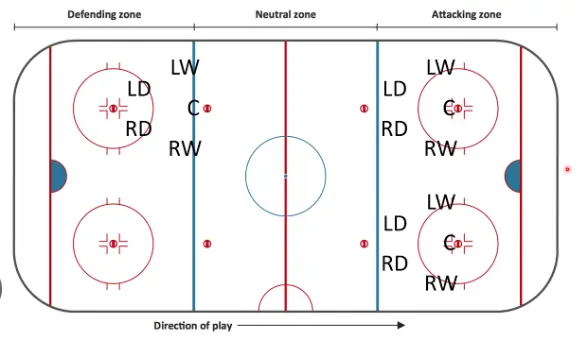
Tactical Applications of Icing in Hockey
Facilitating Line Changes
Employing icing as a tactical measure allows hockey teams to substitute players, giving those on the ice a needed break while fresh players join the game. This tactic is a fundamental strategy in hockey to maintain player energy and effectiveness.
Interrupting Opponent’s Momentum
Teams often use icing to halt the momentum of their opponents, especially when facing intense offensive pressure. By intentionally sending the puck down the ice, a team can disrupt the game’s flow, providing a chance to regroup and potentially shift the game’s dynamics in their favor.
Strategic Pause for Defensive Organization
A noticeable trend in modern hockey is the strategic use of icing to gain time for defensive organization. In situations where a team is under significant pressure in their own zone, intentionally icing the puck can provide a brief respite. This allows the defensive players to reorganize and strategize, aiming to fortify their defense and clear the puck more effectively.

Overview of Icing Rules Across Different Hockey Leagues
Traditional Touch Icing
In traditional touch icing, the rule is enforced only when a player makes contact with the puck. This method is still practiced in major leagues like the National Hockey League (NHL) and the International Ice Hockey Federation (IIHF). The focus here is on the direct interaction with the puck to decide icing infractions.
Automatic No-Touch Icing
Several leagues have shifted to a no-touch or automatic icing approach. This rule variation automatically declares icing without requiring any player to touch the puck. Its primary goal is to enhance player safety by avoiding the high-speed chases that often lead to collisions.
Hybrid Icing Rule
Hybrid icing is the prevalent variation in contemporary hockey, blending aspects of both touch and no-touch icing. Under this rule:
- In certain zones, particularly the icing team’s defensive zone, touching the puck is necessary to call off icing.
- In other areas, icing is automatically declared, irrespective of player contact.
This method aims to balance safety and game flow. By permitting touch icing within defensive zones, it allows teams a chance to counteract icing calls actively. Automatic icing in other zones minimizes risk and maintains consistent rule enforcement to positively influence gameplay dynamics.
Tactical Approaches to Icing in Hockey
Offensive Tactics to Counteract Icing
- Pursuing the Icing Puck: A frequent offensive tactic involves players swiftly chasing the puck after an icing is initiated. The goal is to reach the puck first, cancel the icing call, and keep the play alive in the offensive zone, thereby pressuring the defense.
- Intentional Icing for Rest: Some teams might intentionally ice the puck as a strategy to give their players a brief rest. This method is somewhat controversial as it risks losing puck possession and potentially gives the opposition a chance to score.
Defensive Strategies to Encourage Icing
- Puck Dumping: A common defensive move is to dump the puck deep into the opponent’s zone. This not only alleviates pressure on the defense but also forces the opposing team to go back and retrieve the puck, which could lead to an icing call if they do not manage it promptly.
- Deliberate Delay in Line Changes: Defensively, teams might delay their line changes strategically. By holding the puck in their zone and postponing substitutions, they can exhaust the opposing players, increasing the chances of an icing call when the puck is eventually cleared. This strategy aims to gain a tactical advantage by managing the timing of player rotations.
Debates and Decisions on Icing-Related Injuries
Risk of Injuries in Icing Situations
The safety issues linked to icing races in hockey, where players dash towards the puck to cancel an icing call, have raised significant concerns. Recent debates among the hockey community have centered on examining rule adjustments to lessen these risks. Proposed measures include adopting automatic icing universally or refining the hybrid icing approach to enhance player safety. By tackling these safety issues and adopting suitable strategies, leagues strive to decrease injury rates while maintaining the integrity of the game.
Icing Strategy and Sportsmanship in Hockey
Balancing Defense and Fair Play
Using icing as a defensive tactic in hockey poses questions about sportsmanship and ethical play. While some view strategic icing—used to halt the game and break the opponent’s momentum—as a legitimate tactic within the game’s rules, others believe it can diminish the spirit of fair play and affect the game’s integrity. This ongoing debate highlights the need for continuous discussions and possibly updating the rules to ensure a fair balance between competitive strategy and sportsmanship in hockey.
Read also: Is icing good or bad in hockey?
Concluding Thoughts on the Role of Icing in Hockey
Critical Impact of the Icing Rule on Game Dynamics
The icing rule is pivotal in preserving the rhythm and equilibrium of hockey. This rule discourages teams from merely clearing the puck down the ice, promoting sustained offensive action and thoughtful defensive strategies. It compels teams to be actively involved in all facets of the game, rather than relying solely on defensive maneuvers to limit the opposing team’s offense. This enforcement enhances the dynamism of the game, ensuring continuous engagement for fans and adding to the overall excitement of hockey matches.
Advancements in Icing Regulations
The icing rule has evolved significantly to align with the evolving nature of hockey. Recent modifications have been primarily driven by the need to enhance player safety and maintain the strategic essence of the game. These changes are in response to concerns about potential injuries during races for the puck and the desire to uphold the sport’s integrity. By consistently revising and refining the icing rules, hockey leagues strive to achieve an optimal balance between competitive intensity, safety, and fair play.
FAQ’s: Icing Rule in Hockey
What is the icing rule in hockey?
The icing rule in hockey is a regulation that stops teams from intentionally slowing down the game. It forbids players from shooting the puck from their defensive zone all the way down the ice, crossing the opponent’s goal line, without it resulting in a goal.
Is icing considered a penalty in hockey?
No, icing is not classified as a penalty. However, when icing is successfully called (after meeting specific criteria), it leads to a faceoff in the offending team’s defensive zone. This acts as a deterrent, indirectly penalizing the team for attempting to slow down the game.
When was the icing rule last modified in hockey?
The icing rule has seen multiple updates, with the latest major revisions aimed at enhancing player safety and maintaining strategic balance. The specific timing of these changes can differ across various hockey leagues.
Why was the icing rule in hockey introduced?
The icing rule in hockey was introduced to stop teams from just clearing the puck to the other end of the ice under pressure, which disrupted the game’s flow and made it too defensive.
Are there any exceptions to the icing rule?
Yes, several exceptions apply to the icing rule:
- Icing is not called if the puck is deflected by an opposing player (other than the goalie) before it crosses the goal line, applicable in leagues that follow touch icing.
- It is also not called if the goalie exits the crease to interact with the puck, regardless of whether they touch it.
- Additionally, during a power play, icing results in a faceoff in the neutral zone instead of calling icing directly.
Can a Team Deliberately Commit Icing?
Yes, teams can intentionally commit icing for various strategic purposes, including:
- Switching players to ensure fresh legs are on the ice.
- Interrupting the opposing team’s offensive flow.
- Gaining time to organize their defense, which is becoming an increasingly common tactic.
What occurs when an icing violation is called in hockey?
During an icing violation, the game is halted, and a faceoff is scheduled to take place in the defensive zone of the team that committed the icing.
What is the hybrid icing rule?
The hybrid icing rule blends features of both touch icing and automatic icing. In this system, player contact with the puck within the defensive zone is necessary to negate an icing call. However, in the neutral and offensive zones, icing is called automatically, irrespective of contact. This approach seeks to harmonize player safety with the strategic components of the game.
Can a team make line changes after committing an icing violation?
No, teams are not allowed to make line changes after an icing violation. They must wait until after the ensuing faceoff, which occurs due to the icing call, before any line changes can be made during the stoppage in play.
